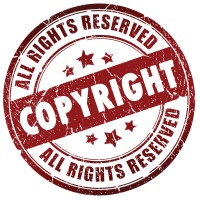 The website www.ThatSongSoundsLike.com is dedicated to one mission: placing similar sounding audio clips from well-known artists side-by-side. With hundreds of submissions posted over six years, it’s a staggering collection that has musicians wondering whether their music is safe in the market place. It has others asking, “Just how much music can I take before getting slapped with a copyright suit?” The answer is not as clear as you might imagine. This month’s Legal Pad dives into copyright, stealing, and inspiration in today’s music industry.
The website www.ThatSongSoundsLike.com is dedicated to one mission: placing similar sounding audio clips from well-known artists side-by-side. With hundreds of submissions posted over six years, it’s a staggering collection that has musicians wondering whether their music is safe in the market place. It has others asking, “Just how much music can I take before getting slapped with a copyright suit?” The answer is not as clear as you might imagine. This month’s Legal Pad dives into copyright, stealing, and inspiration in today’s music industry.
Copyrights Protect Your Music: The United States Copyright Code defines infringement, in part, as “[a]nyone who violates any of the exclusive rights of the copyright owner.” Exclusive rights are the rights to claim authorship of that work, the right to distribute to the public, and the right to prevent the use of his or her name as the author of any work of visual art that he or she did not create, among others. Copyright protection exists in original works of authorship for the life of the author plus seventy years (if the work was created after Jan. 1, 1978).
Some Music Sounds Alike: Could someone really own the copyright to the chord progression G-D-C in 4/4 time? Aren’t there simply too few combinations to make pop music copyrights practical? A line that is quoted often as defense to infringement comes from a judge who penned the 1983 opinion in Selle v. Gibb, and details this question succinctly: “Simple, trite themes are likely to occur spontaneously and only few suit the infantile demands of the popular ear.” The A.V. Club recently dug into the same topic:
“It’s no secret that popular music is filled with similar-sounding chord progressions, riffs, and beats; a finite number of notes extended over an infinite number of songs is bound to result in some doubling, especially when certain combinations sound so much better than others.”
However, simply because many songs sound alike does not mean artists are free from conflict, even when there was little intention to steal. It is not uncommon for the alleged infringement to stem from what was – for the artist – only a moment of divine inspiration. There are times where components of a song are so reminiscent of another that infringement is easily discernable (see George Harrison’s 1970 hit “My Sweet Lord” and the Chiffon’s 1962 classic “He’s So Fine”). There are also times when infringement is less axiomatic. In a third set of circumstances, infringement, while easily identified, is never litigated (see Killing Joke’s 1984 song “Eighties” and Nirvana’s “Come As You Are”). So where is the line drawn between “inspiration” and “infringement”? And as an artist, how do you know when the line has been crossed?
Anatomy of a Song: There are some parts of a song that are “copyrightable,” while others are not. While the complexities of the Copyright Code are vast, here are some general rules of thumb to avoid infringing on the exclusive rights of a copyright owner:
Song Titles: Generally, song titles are not copyrightable, due to a lack of expression (different songs entitled “I Miss You,” for example, have been recorded by over a dozen artists). Be cautious, however, of naming your composition after a creative or uniquely famous song title, as this may be grounds for infringement.
Melody: Absolutely copyrightable. However, some songs simply sound alike.
Lyrics: Copyrightable, but this depends on creativity and uniqueness. (The lyric “I love you” is likely not copyrightable, where the phrase “Picture yourself in a boat on a river, with tangerine trees and marmalade skies” certainly is).
Sampling: Illegal without authorization, for now. The industry is loosening its restrictions and while many artists are operating without legal threat from record companies (i.e. Girl Talk), some artists continue to find themselves under fire (i.e. Danger Mouse’s Grey Album).
Harmonies, Bass Lines, & Drum Beats: Copyrightable, except when they’re not. Like lyrics, this depends on the degree of creativity, uniqueness, placement within the song, and other components.
How to Protect Your Music & Creative Process: First off, don’t steal. An artist needs to walk the fine line between inspiration and infringement. Infringement can include hefty civil damages, fines, and imprisonment. Secondly, protect your creative output. Have your work filed with the United States Copyright Office. While registration is not a condition for copyright protection, it is important to note that (1) you may not sue for infringement until a work has been registered, and (2) a work must be registered prior to the infringing acts in order to receive statutory damages.
Adam Barnosky is a Boston-based attorney and writer. For industry trends, legal updates, or to request an upcoming Legal Pad topic, find him on Twitter @adambarnosky.
DISCLAIMER: The information contained in this column is general legal information only and should not be taken as a comprehensive guide to copyright law. Consult your attorney for all specific considerations.
